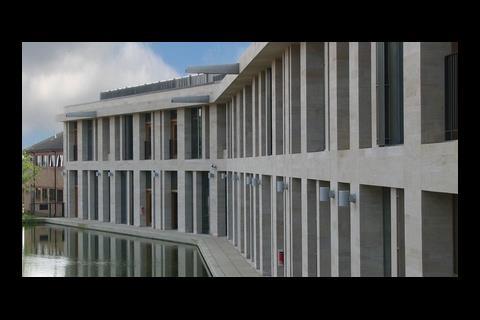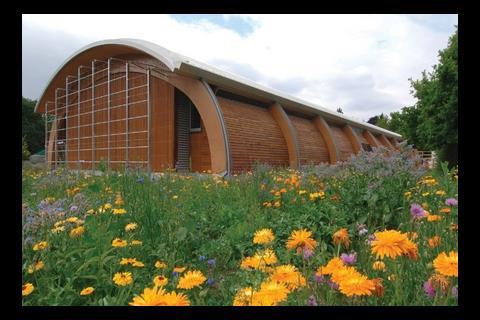Simon Rawlinson of Davis Langdon describes a new twist to this procurement route that combines elements of two-stage tendering and collaborative working
01 Introduction
Two-stage tendering is becoming an increasingly common procurement route, particularly in the current, buoyant construction market, where contractors are less prepared to enter into single-stage, lump-sum tenders.
While the two-stage approach promises programme acceleration and greater collaboration between designer and contractor, the reality on many projects is that clients can go to market with incomplete design information. They also incur extra costs associated with negotiation premiums and additional risk allowances when agreeing the second stage and, if the design continues to develop while the contractor finalises his price, may continue to hold the financial risk of design changes.
Under conventional two-stage procurement, problems also occur because insufficient integration takes place between the design and construction teams or if there is a lack of transparency in the contractor’s pricing.
Furthermore, specialist subcontractors may only become directly involved in finalising some aspects of the design once the contract is won. These issues and others can breed mistrust which can undermine the collaborative approach that many clients seek to encourage on their projects.
In response to these challenges, the University of Cambridge, supported by Davis Langdon has developed a procurement route that combines elements of develop and construct, two-stage tendering and partnering with a carefully managed design development, risk reduction and project procurement process. All projects that have used this method have been delivered to budget and most on time, which shows two-stage tendering can combine high project performance with a fair allocation of risk.
02 About the approach
- It is a develop and construct approach in which the design team is, in most cases, novated to the main contractor before the fixed price is agreed
- A main contractor is appointed at stage C or D
- Tier two contractors are formally involved in design development and pricing before the fixed price is agreed
- The preferred contract is NEC3 Engineering and Construction Contract Option A: Priced contract with activity schedule.
03 Background and benefits
Clients that want to maximise the impact of collaborative working using NEC are rethinking the way jobs are managed so they can achieve high design quality, manage risk and be certain of costs. By organising procurement so the project team is focused on meeting these objectives and jointly completing the design in line with the budget, all parties can be confident about a successful, profitable outcome.
The main benefits associated with the approach are as follows:
- Effective management underpinning a fair allocation of design, performance and construction risk
- Full integration of design and construction through collaborative working
- Overlapping of design and procurement without risk of unpriced design development
- Reduced need for an additional shadow design team, where the original team is novated
- Progressive co-ordination of the work of specialist contractors.
04 How the approach works
- The design team is appointed, with the knowledge that it will be novated to the contractor after stage C or D. The terms on which they will be novated and their fees are agreed. The client retains the services of a project manager, employers agent, cost manager and CDM co-ordinator
- The design is completed to Stage C or D and the main contractor is selected and appointed on a pre-contract services basis. The information provided by the client, which will include the latest design report, planning submission and any design guide, will form the defined employer’s works information, so it integrates with the NEC3 very well
- Planning consent is often obtained before the contractor is appointed, although planning can run in parallel with the contractor procurement process
- The main contractor’s initial appointment is typically made on a quality-based assessment, together with the cost of preliminaries, overhead and profit
- The design team is, on most projects, novated to the main contractor immediately after it is appointed. As a result, design development and agreement of the price and programme take place hand-in-hand
- The main contractor works with the design team, client and stakeholders to develop the scheme in accordance with brief, planning scheme and budget. This approach, based on open book accounting, and progressively greater cost certainty enables everyone to buy in to, or veto, any changes that are required to meet the programme and budget
- An important action for the contractor is the development of the procurement strategy. This is developed jointly by the contractor, client and client’s advisers. It sets out how the pre-contract services will be delivered, how the design will be developed, and how interactions between the client, stakeholders, designers and specialist contractors will be managed. In particular, the procurement strategy describes the status of design reviews and project sign-offs, and how they will be managed
- The main contractor is required to involve tier two subcontractors in the design development and tendering process.
- This helps ensure that the design is complete and properly co-ordinated. Tier two specialists may come from the main contractor’s own framework or may be separately selected by the client. Some
- will enter into a formal pre-construction services agreement and will be paid a fee. Their budget prices provide further input and early warning in connection with the development of the scheme
- Regular reviews throughout the design development and tender period help ensure there are few surprises at financial close. This is facilitated by the positive use of value and risk management processes – typically facilitated by the client’s project manager. Risk management activities have the further benefit of supporting requirements for a contract risk register in NEC3.
- The differences between this approach and conventional two-stage procurement which really have an impact on project outcomes are the deliberate integration of contractor and design team at an early stage, the team’s focus on delivering the project within time and cost targets, the planning of the procurement process, and the openness of the pricing approach.
05 Success factors
This approach demands changes in practice from everyone involved, so the most important factors in determining a successful outcome are client buy-in, clear communication and a good contractor procurement strategy, setting out milestones, reviews, sign-off points and so on. The approach has been successfully adopted on a number of projects, some of which did not have professional construction clients. This illustrates that its use is not restricted to experienced employers.
By novating the design team to the contractor at a relatively early stage, the client is exchanging some control over design development to secure wider benefits associated with collaborative design and construction. Accordingly, the design must be developed to an appropriate degree and the business case signed off before the contractor is appointed. There must also be real engagement with the team from clients and stakeholders in the later stages of design development, which must be led by the contractor. Other success factors include:
- Appointing the right combination of main contractor, design team and specialists. In addition to their technical skills, their ability to work together as a team will be a key determinant of the successful outcome of the tender stage and the project as a whole
- Maintaining well managed, effective client relationships with all members of the team
- Achieving a complete, coordinated design, based on specialist contractor input, at the point of financial close
- Agreement of a robust contract sum, typically based on the procurement of 90-95% of value, including appropriate risk allowances
- Aiming for total commitment to a collaborative approach from all the team
- A clear procurement strategy which sets out roles, dates and procedures
- Ensuring the client and end user’s engagement in the procurement strategy
- A planned approach to value management
- Positive engagement with tier two contractors during design development. The approach requires input to the overall management of the project by the main contractor and a willingness to adopt an open-book approach to reporting the supply chain’s costs
- Ensuring effective administration of the pre-construction and construction stages by the project manager, including change management and timely application of the provisions of the contract.
06 Issues to consider
• Pre-selecting the right contractor. Once the contractor is on board and the design team is novated, there is little opportunity for a plan B. As well as technical capability and commercial attitude, skills such as design and client management are important. Remember the contractor is free to walk away before the main contract is finalised
• The client’s ability to respond to the design development programme. Once the contractor is appointed, there will be pressure to complete the design quickly. Clients must ensure they have the resources in place to manage the response of themselves and stakeholders to the project review process
• The importance of robust cost management processes, including benchmarks and audits, to enable the achievement of demonstrable value for money
07 Key performance indicators
(See table attached)
08 Case study: Plant Growth Facility, University of Cambridge
This project involved the construction of a specialist facility for growing plants for research purposes in controlled conditions. The building cost £4.6m and has a floor area of about 1,000m2. It comprises 32 modular growth rooms and ancillary accommodation.
As this facility was located in Cambridge’s botanical gardens, a discreet design was required and a solution based on timber cladding and an arched, glulam frame was adopted. Access to the site was also restricted, which imposed practical limits on component sizes, working methods, site logistics and so on. The client’s objectives were delivering the end user’s technical requirements within programme and budget, ease of maintenance, meeting sustainability targets and minimising disturbance to neighbouring uses. The design team, comprising RH Partnership, FJ Samuely and Faber Maunsell was novated to contractor Willmott Dixon at RIBA Stage D. All members of the team were new to the university’s develop and construct approach before. In this instance, the specialist provider of plant growth modules and the M&E contractor were also engaged to work alongside the team during design development.
The approach meant the end user achieved a better technical solution than had been anticipated, through close working with the specialist. This was in part because the impact of the module design on layout, space planning and servicing of the rest of the building was taken into account at the appropriate stage. Furthermore, close co-operation between the plant growth module specialist and the M&E subcontractor resulted in a better co-ordinated and easier to maintain solution, with all mechanical plant being based on a common specification.
Early involvement of contractor Willmott Dixon ensured the design development process was properly resourced and managed and that buildability, access and logistics issues were properly addressed.
Furthermore, the team designed risk out of the project, so a high level of cost and programme certainty was secured before starting on site.
Pre-construction services were concluded on time and budget and the completed project also met delivery targets, with few changes introduced during construction. Evidence from the portfolio of projects let on develop and construct indicates that these outcomes are regularly achieved, which is not the case with conventional procurement.
Operational issues were considered at all stages, with the facilities management team involved from the outset. The main contractor accepted a 12 month maintenance liability, together with an extended service contract for the specialist module provider.
09 Acknowledgments
Davis Langdon would like to thank Michael Bienias RIBA, director of estates and his team of project managers at the University of Cambridge, and Tim Knee-Robinson of Davis Langdon for their assistance



























No comments yet